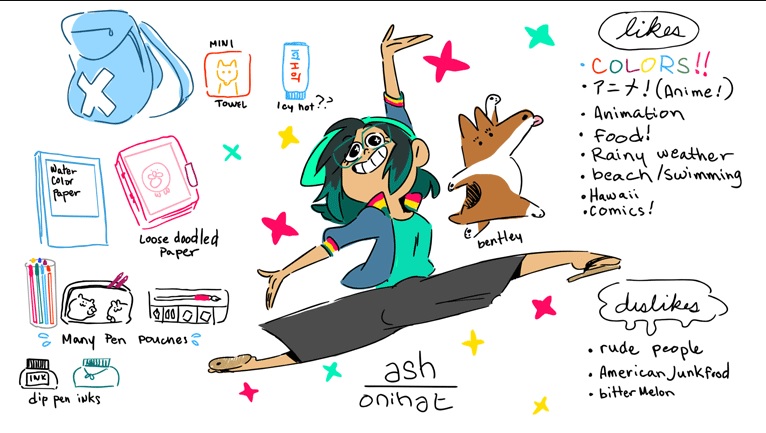Ashley Ann Tahilan is a renowned storyboard artist known for her contributions to animation and visual storytelling. Her Storyboard Guide serves as a valuable resource for aspiring artists and professionals seeking to enhance their storytelling techniques. This article delves into the key aspects of her guide, offering insights into effective storyboarding practices.
Who is Ashley Ann Tahilan?
Ashley Ann Tahilan is a Filipino-American storyboard artist and writer based in Los Angeles, California. She has worked on notable projects such as Craig of the Creek at Cartoon Network, and various productions at Titmouse and DreamWorks TV. Her work has earned her nominations for Outstanding Writing for Children’s/Young Teen Animated Series and recognition from GLAAD for inclusive storytelling.
Understanding Storyboarding
What is a Storyboard?
A storyboard is a visual representation of a narrative, consisting of a sequence of drawings that outline scenes, actions, and dialogues. It serves as a blueprint for filmmakers, animators, and content creators to plan and visualize their projects effectively.
Importance of Storyboarding
-
Clarifies the narrative structure
-
Identifies potential issues before production
-
Facilitates communication among team members
-
Saves time and resources during production
Key Components of a Storyboard
| Component | Description |
|---|---|
| Panels | Individual frames depicting scenes or actions |
| Dialogue | Text indicating character speech or narration |
| Action Notes | Descriptions of movements or events within a scene |
| Timing | Indication of scene duration and pacing |
Ashley Ann Tahilan’s Storyboarding Process
Ashley Ann Tahilan emphasizes a structured approach to storyboarding, ensuring clarity and coherence in visual narratives.
Step 1: Concept Development
Begin by outlining the core idea or message of the story. This foundation guides the subsequent steps in the storyboarding process.
Step 2: Scriptwriting
Develop a script that includes dialogues, scene descriptions, and character actions. A well-crafted script serves as a roadmap for the storyboard.
Step 3: Sketching Panels
Create rough sketches for each scene, focusing on composition, camera angles, and character positioning. These initial drawings help visualize the flow of the story.
Step 4: Adding Dialogue and Action Notes
Incorporate dialogues and action notes into the panels to provide context and detail. This step ensures that each scene conveys the intended message effectively.
Step 5: Review and Revise
Evaluate the storyboard for coherence, pacing, and visual appeal. Make necessary adjustments to enhance the overall narrative.
Tips for Effective Storyboarding
-
Define the Story’s Purpose: Understanding the core message aids in creating focused and impactful scenes.
-
Use Thumbnails: Small, quick sketches help plan the layout and sequence of scenes efficiently.
-
Maintain Consistency: Ensure uniformity in character design, perspective, and style throughout the storyboard.
-
Seek Feedback: Collaborate with peers or mentors to gain insights and improve the storyboard’s quality.
-
Be Flexible: Be open to revising and refining scenes to better serve the narrative.
Common Mistakes to Avoid
-
Overcomplicating Panels: Avoid cluttered scenes that may confuse the viewer.
-
Neglecting Timing: Ensure that the pacing aligns with the story’s rhythm and emotional beats.
-
Inconsistent Character Design: Maintain uniformity in character appearances to prevent confusion.
-
Ignoring Feedback: Constructive criticism is vital for improvement; embrace it.
Benefits of Using Ashley Ann Tahilan’s Guide
-
Structured Approach: Provides a clear, step-by-step methodology for storyboarding.
-
Enhanced Clarity: Helps in visualizing and organizing complex narratives.
-
Improved Collaboration: Facilitates better communication among creative teams.
-
Time Efficiency: Identifies potential issues early, saving time during production.
\FAQs
Q1: Who can benefit from Ashley Ann Tahilan’s Storyboard Guide?
A1: Aspiring storyboard artists, animators, filmmakers, and content creators seeking to improve their visual storytelling skills.
Q2: Does the guide cater to beginners?
A2: Yes, the guide is designed to be accessible to individuals at all skill levels, offering foundational knowledge and advanced techniques.
Q3: What makes this guide unique?
A3: Ashley Ann Tahilan’s industry experience and structured approach provide practical insights that bridge the gap between theory and application.
Q4: Can this guide be applied to various media formats?
A4: Absolutely, the principles outlined are applicable to film, animation, gaming, and other visual storytelling mediums.
Conclusion
Ashley Ann Tahilan’s Storyboard Guide serves as a comprehensive resource for mastering the art of visual storytelling. By following her structured approach, creators can enhance their narratives, improve collaboration, and streamline the production process. Whether you’re a novice or a seasoned professional, this guide offers valuable insights to elevate your storytelling endeavors.






